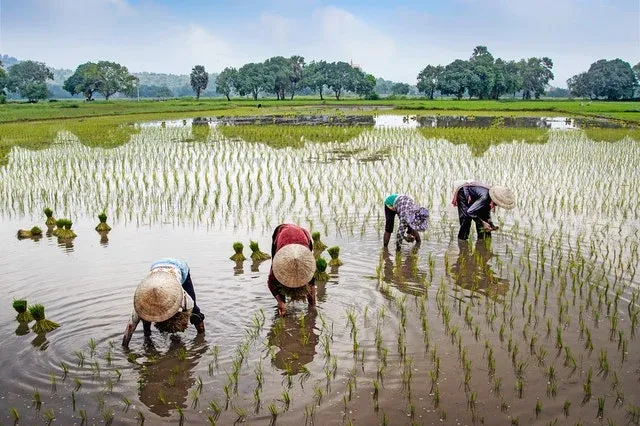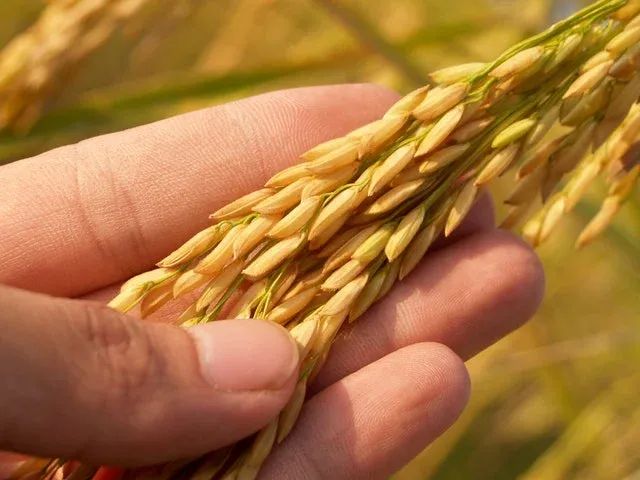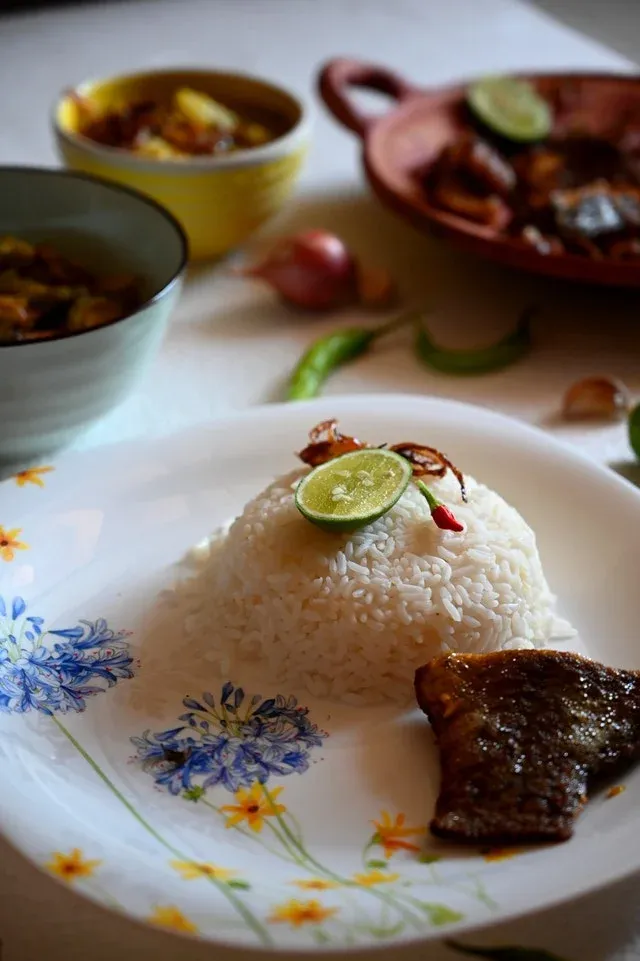If you've ever wondered what the top rice producing regions worldwide are, then read this post to know more about them.
Rice is a staple food to more than half of the world’s population. Its
ability to thrive in tropical climate conditions makes it an ideal food crop
to grow and eat in many countries in monsoon Asia and in West Africa. On top
of this, rice is steadily becoming a more popular food crop in Latin America
and the Caribbean.
Top Regions Around The World Where Rice Is Grown and Consumed
When it comes to
planting rice, the methods used in many of these places around the world are those that
have traditionally been practiced for centuries. Rice cultivation typically
utilizes a plot of land and plenty of water, and it relies heavily on human
labor, especially in less-industrialized areas. However, many developed
agricultural communities have also turned to industrial-scale rice farming and
now use advanced technologies and methodologies.
Below are the top rice-producing regions and countries in the world, as well
as the leading consumers of this very important food crop.
Asia
Asia is the leading producer and consumer of rice. With the moniker
“rice-producing Asia,” the continent accounts for roughly 90% of the world’s
rice production. China and India are the two largest producers of rice
globally, while other Asian countries such as Indonesia, Bangladesh, Vietnam,
and Thailand also consistently appear on the list of top rice-producing
countries in the world.

|
| Photo by Văn Long Bùi from Pexels |
As the top producer of rice, Asia is also the leading exporter of the crop.
India accounts for roughly 30% of global exports of rice, while Vietnam and
Thailand consistently rank second and third respectively.
In terms of consumption, rice accounts for more than 50% of the caloric intake
of most Asian households. However, the frequency of rice consumption can vary
between high-income and low-income countries. For low-income countries, rice
is enjoyed relatively equally by different socio-economic classes.
High-income countries like Japan, Taiwan, South Korea, and even Hong Kong have
a declining rate of rice consumption due to the ever-growing list of food
options among the populace, many of whom choose to focus on consuming more
meat and vegetables. Countries like China, Malaysia, and Thailand, which are
considered middle-income countries, also appear to be following the same
trend.
People in middle to low-income countries such as the Philippines, Cambodia,
Laos, and Bangladesh continue to enjoy rice in their diet, showing a growth in
their consumption patterns. Other countries like India, Vietnam, and
Indonesia, on the other hand, are exhibiting a decline in rice consumption,
but at rates that are at a slower pace compared to high-income countries.
Africa
In Africa, rice production has grown over the years, with Western Africa
producing around 40% of rice more than any subregion. Countries like Egypt,
Nigeria, and Madagascar have the highest individual production rates.
 |
| Photo from pexels.com |
That being said, Africa consumes more rice than they produce. Although rice
has been the staple food for most of Western Africa for more than 50 years,
rice consumption in the continent has only grown drastically in relation to
rates of production, with other regions in the continent now also consuming
rice more than ever before. Factors that affect the rising levels of
consumption are urbanization and changes in family occupational structures,
with more women joining the workforce in recent years.
Before, rice was typically reserved only for special occasions, but with
urbanization and affordable rice imports from Asia, many people in Africa can
now eat it every day. The grain is also preferable to tuber crops and cassava
due to its convenient preparation methods and ability to be stored for long
periods.
Despite the growing rate of rice production in the continent, rice farmers in
Africa are unable to meet the rapidly increasing consumer demand for the food
crop. As a solution, Africa now imports most of its rice to meet the growing
demand.
Latin America
Rice production in Latin America is focused on tropical countries of the
region, with Brazil being the largest producer of the grain, followed by Peru,
Colombia, and Ecuador. Despite the region’s ability to produce rice, Latin
America is also a net importer of rice like Africa.
With rice consumption rising in the region by as much as 40% over the last two
decades, rice is becoming the fastest-growing staple food in Latin America.
The grain now supplies most of the caloric requirements of people in countries
like Ecuador, Peru, Panama, and Costa Rica, as well as those in Caribbean
countries such as Cuba, the Dominican Republic, and Haiti.
Despite the growth of rice consumption in the region, however, consumption
patterns have not reached the levels of Asian countries due to Latin America’s
unique culinary traditions. Local cuisines typically prominently feature other
food crops, such as wheat, beans, and maize.
Oceania
Rice consumption in the Pacific Islands has also grown over the years. Leading
consumers include the Solomon Islands, Samoa, and the Cook Islands. Most of
their rice is imported, while a small amount of rice production is done in
Papua New Guinea.
Rice Production in the Developed World
The United States has five rice-farming states, namely Arkansas, California,
Mississippi, Missouri, and Texas. Aside from consuming 80% of their produce,
Americans also export their rice to more than 120 countries around the world.

|
| Photo by Mumtahina Tanni from Pexels |
In Europe, rice has sociocultural and ecological importance despite not being
a staple food in the continent. The European Union’s Common Agricultural
Policy (CAP) regulates rice production in Europe, which means rice cultivation
is financially incentivized in addition to requiring environmentally friendly
agricultural practices. Italy is the leading producer of rice in the region,
followed by Spain and Russia.
Aside from these countries, Australia also follows mostly industrial farming
practices for rice production. However, their rice production has steadily
declined due to recurring periods of drought.
Epilogue
A staple food for more than 3.5 billion people globally, rice continues to be
produced and consumed at ever-increasing rates.
While challenges like climate change, diminishing water resources, lack of
access to agricultural inputs, and labor-related issues hound farmers all over
the world, improving technologies and methodologies are also helping more and
more rice producers achieve economies of scale.
This will certainly help in ensuring the continuing growth of rice
production–and food security in general–in most places around the world.
PIN THIS POST
Similar stories:
This post may contain affiliate links, including those from Amazon Associates, which means that if you book or purchase anything through one of those links, we may earn a small commission but at no extra cost to you. All opinions are ours and we only promote products that we use.
Download a free copy of my Churches of Nueva Ecija eBook HERE!


I love that each region produces a different kind of rice, this is fascinating to me....I love rice...
ReplyDelete